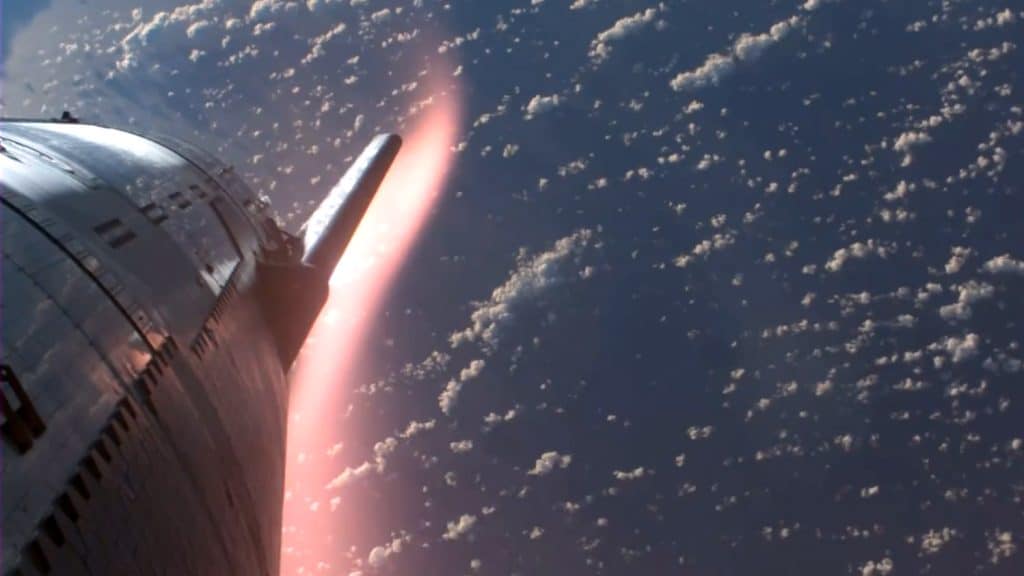SpaceX Starship: Overcoming Setbacks, Preparing For The Next Launch

Table of Contents
Analyzing the Past Starship Launches and Explosions
SpaceX's Starship development follows an iterative approach, where each test flight, regardless of outcome, provides invaluable data. Understanding these past launches is crucial to appreciating the program's progress.
The Importance of Test Flights and Data Acquisition
The seemingly destructive nature of some Starship test flights is, in reality, a vital part of the design process. Failures are not setbacks, but rather opportunities to identify weaknesses and implement improvements. This rapid prototyping and iterative design methodology is central to SpaceX's success.
- SN8, SN9, SN10, SN11, etc.: These early Starship prototypes demonstrated critical learnings. SN8 showcased impressive ascent and controlled descent but failed due to insufficient propellant during the landing burn. SN10 achieved a soft landing, only to explode minutes later due to a structural failure. Subsequent prototypes like SN11 suffered from engine issues and rapid unscheduled disassemblies. Each failure provided crucial data on aerodynamic forces, engine performance, and structural integrity.
- Importance of collecting data from each launch: SpaceX utilizes extensive telemetry and sensor data from each launch, whether successful or not. This data informs simulations and refined designs for subsequent iterations.
- Emphasis on iterative design and rapid prototyping: The speed at which SpaceX designs, builds, and launches Starship prototypes is unprecedented. This rapid iteration allows for swift implementation of learnings from previous tests.
Addressing the Challenges of Super Heavy Booster Integration
Integrating the Super Heavy booster, a massive rocket designed to propel the Starship to orbit, presents unique challenges. Its scale and the sheer number of Raptor engines necessitate precise coordination and robust systems.
- Challenges related to engine ignition and synchronization: Lighting and synchronizing 33 Raptor engines simultaneously requires incredibly precise timing and control.
- Fueling and pressurization systems: Managing the cryogenic propellants (methane and liquid oxygen) for such a powerful rocket is complex. Leaks, pressure imbalances, and efficient fueling procedures are critical.
- Structural integrity during liftoff: The immense forces generated during liftoff put significant stress on the Super Heavy booster’s structure. Designing for this extreme stress is crucial for ensuring structural integrity.
Technological Advancements and Improvements
SpaceX’s relentless pursuit of improvement is evident in the ongoing refinements to both the Raptor engines and the Starship design itself.
Raptor Engine Upgrades and Reliability
The Raptor engine, a crucial component of both Starship and Super Heavy, has undergone significant upgrades.
- Increased thrust and efficiency: Ongoing iterations have led to increased thrust and improved propellant efficiency, enhancing the overall performance of the system.
- Improved combustion chamber design: Modifications to the combustion chamber design have increased engine lifespan and reliability.
- Enhanced redundancy and safety features: Improved redundancy measures and safety features ensure continued operation even in the event of engine failures.
Refined Starship Design and Materials
Based on the lessons learned from previous tests, the Starship design has seen notable improvements.
- Strengthening of structural components: Structural modifications have been implemented to improve the overall robustness of the vehicle and withstand the intense forces of atmospheric re-entry.
- Improvements to heat shield design and materials: The heat shield is critical for protecting Starship during atmospheric re-entry. Ongoing developments focus on improving its resilience and effectiveness.
- Modifications to the landing legs and guidance systems: Improvements to the landing legs and guidance systems are designed to enhance landing accuracy and precision.
Regulatory Hurdles and Environmental Concerns
The path to operational Starship launches involves navigating complex regulatory and environmental considerations.
Navigating FAA Licensing and Environmental Reviews
Obtaining necessary launch licenses from the Federal Aviation Administration (FAA) is a critical step.
- Environmental Impact Statement (EIS) process: SpaceX has undergone a rigorous EIS process to assess the environmental impact of Starship launches.
- Addressing concerns about noise pollution, debris, and potential environmental damage: Mitigating concerns regarding noise pollution, debris generation, and potential environmental damage is a crucial aspect of the licensing process.
- The timeline for obtaining necessary approvals: The FAA's review process can be lengthy, adding to the overall timeline for Starship's operational launches.
Public Perception and Addressing Safety Concerns
Open communication and transparency are vital to addressing public concerns.
- Communicating the risks and benefits of Starship development: SpaceX aims to transparently communicate both the inherent risks and the significant potential benefits of the Starship program.
- Highlighting the safety measures implemented: Emphasizing the numerous safety measures implemented throughout the development and launch processes helps build public confidence.
- Engaging with the public to build trust: Building trust with the public is essential for long-term success and support for the Starship program.
Conclusion
The SpaceX Starship program, while facing substantial setbacks, demonstrates remarkable resilience and a commitment to pushing the boundaries of space exploration. By meticulously analyzing failures, implementing technological advancements, and navigating regulatory hurdles, SpaceX is inching closer to its ambitious goals. The lessons learned from previous Starship launches, coupled with ongoing improvements, pave the way for future success. The next launch of SpaceX Starship represents a significant milestone, promising a leap forward in space transportation. Stay informed about the latest developments in the exciting world of SpaceX Starship and follow its journey towards making space travel more accessible than ever before.

Featured Posts
-
 Trump Sends Rubio On European Diplomatic Mission
May 29, 2025
Trump Sends Rubio On European Diplomatic Mission
May 29, 2025 -
 The Mbappe Real Madrid Connection A Path To Unparalleled Success
May 29, 2025
The Mbappe Real Madrid Connection A Path To Unparalleled Success
May 29, 2025 -
 Stellantis Stlam Names Antonio Filosa Ceo A Critical Moment For The Automaker
May 29, 2025
Stellantis Stlam Names Antonio Filosa Ceo A Critical Moment For The Automaker
May 29, 2025 -
 Ftc Probe Into Open Ai Implications For The Future Of Ai Development
May 29, 2025
Ftc Probe Into Open Ai Implications For The Future Of Ai Development
May 29, 2025 -
 Navigating Canada Us Travel Amidst Boycott Discussions
May 29, 2025
Navigating Canada Us Travel Amidst Boycott Discussions
May 29, 2025
Latest Posts
-
 Odra Czy Historia Sie Powtorzy Wysokie Ryzyko Kolejnej Katastrofy Ekologicznej
May 30, 2025
Odra Czy Historia Sie Powtorzy Wysokie Ryzyko Kolejnej Katastrofy Ekologicznej
May 30, 2025 -
 Measles Cases Rise In Israel Linked To Texas Outbreak
May 30, 2025
Measles Cases Rise In Israel Linked To Texas Outbreak
May 30, 2025 -
 The Threat Of Measles Could Canada Lose Its Elimination Status This Fall
May 30, 2025
The Threat Of Measles Could Canada Lose Its Elimination Status This Fall
May 30, 2025 -
 Texas Measles Outbreak Leads To Spread In Israel
May 30, 2025
Texas Measles Outbreak Leads To Spread In Israel
May 30, 2025 -
 Is Canada On The Brink Of Losing Its Measles Free Status
May 30, 2025
Is Canada On The Brink Of Losing Its Measles Free Status
May 30, 2025
